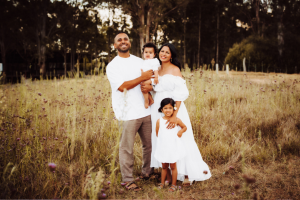International Women’s Day is our call to action for accelerating gender equality. So we’re sharing our soapbox with good friend and consummate leader in tech Ghislaine Entwisle to shine a light on the areas where work remains to be done.
Growing up, I believed anything was possible if you worked hard and had self-belief. I visualised a future which included both a rewarding career and happy family life, and set my sights on achieving a senior executive role in my chosen industry. Little did I know the odds were against me.
In 2020, women made up only about 25% of executive leadership teams in Australia’s top 200 companies1. This statistic is much lower for culturally diverse women despite Australia being one of the most culturally and linguistically diverse populations in the world.
My theory is that motherhood is the single biggest challenge to aspiring and capable women reaching executive roles. Not only can the challenges of motherhood impact the careers of executive women, but let’s also give some thought to the number of women who would have become executives had their careers not been disrupted or sacrificed by having children. This number is difficult to estimate but undoubtedly significant, and the cost of motherhood on women’s careers at any level is immense. According to a McKinsey report2, the Australian economy could increase by a massive 12% by 2025 if we could advance women’s equality. As a working parent, the challenges are now very clear to me, but this was not always the case.
Before I had my first child I realised, to some extent, the impact a child would have on my family unit, my body and my emotions. I was well-informed on the various stages of growth of my baby and what to expect, but less so on the impact a baby would have on my career or the careers of my female friends and coworkers. Pre-baby, most of us thought we would return to work with little change except a decrease in working hours. How wrong we were.
I remember attending a mothers’ group session when my youngest was six months old and the chatter started to focus on what other mums were planning regarding return to paid work. We talked openly about the barriers that faced us.
Low parenting workload equality
Fathers are today more than ever involved in their children’s care and upbringing, however women still account for 94.9% of all primary carer’s leave utilised3 and spend twice as many hours on unpaid care of children than men4. A more equal balance in parenting would make it possible for more women to have a career and, I believe, children are richer for receiving more equal attention from both parents.
Childcare affordability
Prior to returning to work, most women weigh up their household income and increased childcare costs and quickly come to the conclusion that the cost of childcare outweighs their expected income. This results in many mums making the decision to stay home till their children go to school. Even when both parents are earning the same amount, personal preferences and societal expectations mean we tend to regard this cost as a tax on the mother’s earnings.
Lack of employers accommodating flexible working arrangements
Despite acknowledged productivity gains from returning mothers, employers continue to offer part-time and flexibility in executive roles in a tokenistic fashion. There is also a lack of female support programs and active coaching and sponsorship to build confidence and help mothers grow their careers.
The sad reality is, when a mother considers returning to work, the barriers are simply too high to overcome unless she is surrounded by empowering and encouraging influencers (family or work colleagues) and has the financial stability to invest in her career. In the first five years of my sons’ lives, the majority of my female friends have either partially or fully pulled themselves out of the workforce or set up their own home businesses. A number have rejected promotions, some have even had to fight via unions and the ombudsman to keep their jobs.
I don’t want to tell my niece that the world is not her oyster and she will have fewer career opportunities than her brother so she is better off narrowing her career choices. I want to see a world where:
- All men have equal paternity opportunities to women. That their role as father is celebrated and respected equal to a mother’s.
- There is domestic equality in homes, where all family members contribute to the house no matter age or gender without discrimination.
- Affordable childcare is available to every family.
- Employers embrace workplace flexibility and staff are empowered to work where, when and in the way that makes them most productive.
I want all women from all walks of life to have the ability to choose to work, have a successful career and be financially independent. Barriers need to be broken down for current and future generations. Without this, corporate Australia will continue to lose many capable, intellectual, hardworking and productive women.
So next time you see an article complaining about the lack of female representation in the workforce, use it to promote thoughtful discussion on how we can break down some of these barriers or to celebrate and dissect the success stories. Hopefully this will go some way to help reduce the dire statistic that, on current trends, gender parity in CEO roles will only occur in 2221.
Written by Ghislaine Entwisle, director in a global management consulting company and passionate advocate for women in the workforce. Ghislaine is also a supporter of women struggling from homelessness, domestic violence and poverty in raising kids. She is involved in a social enterprise to improve executive level involvement of culturally diverse women and is actively involved in technology and female networks in Melbourne.
1 CEW ASX200 Senior Executive Census 2020
2 The Power of Parity: Advancing Women’s Equality in Asia Pacific, McKinsey Global Institute, April 2018
3 WGEA
4 The HILDA Survey 2018







